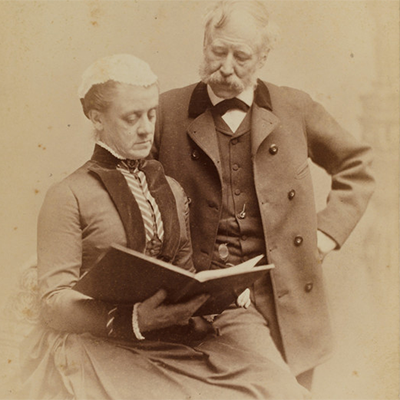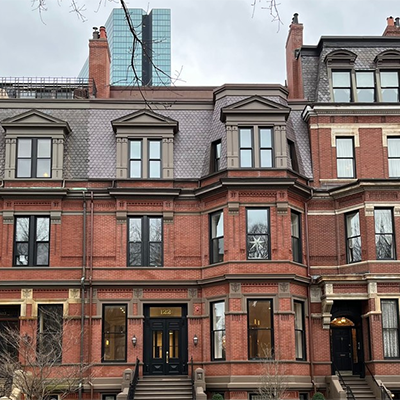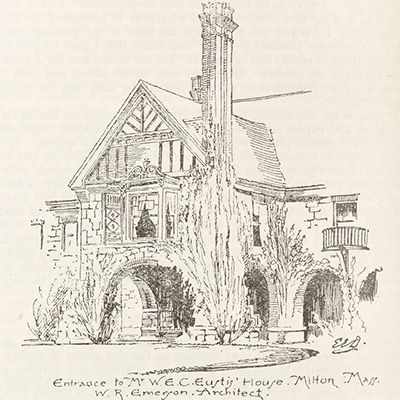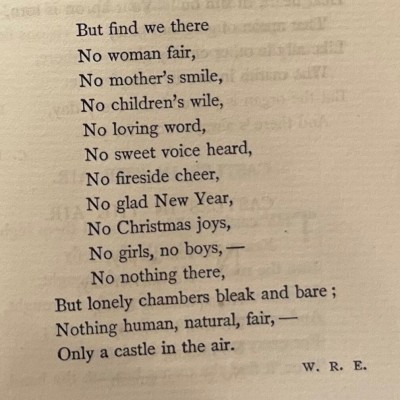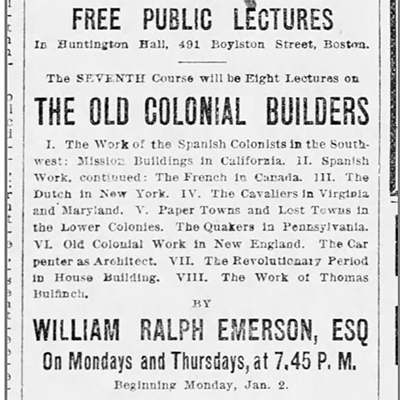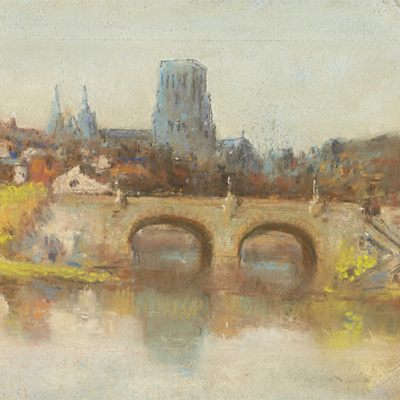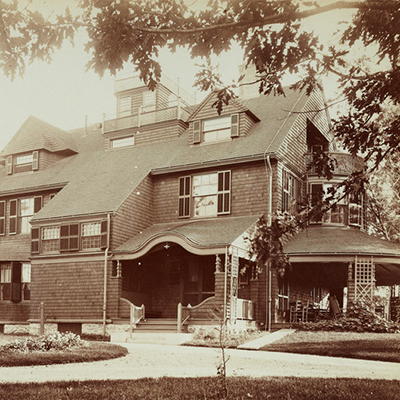 Eustis Estate
Eustis Estate


William Ralph Emerson (1833- 1917) was a prominent and highly sought after New England architect with hundreds of commissions during his lifetime. He was known for his Shingle Style houses and he designed a variety of buildings from government facilities to country estates.
Search the Database
Containing almost 500 unique projects by William Ralph Emerson, this database is the result of collaborative efforts between Historic New England and many cultural institutions and individuals. It is largely based on the work of two Emerson scholars: Dr. Cynthia Zaitzevsky and Roger Reed. The work of these two scholars was expanded by David W. Granston III, whose research uncovered hundreds of additional Emerson buildings and period references. The database includes information on all of his known commissions including those no longer standing and those that were never constructed.
To search, simply enter a keyword below. You can also browse all entries in order by date, or use the advanced search tool to search by state, building type, status, or year.
Search the William Ralph Emerson Architectural Database
Have any additions or information to add to the database? Please contact us.
Learn More about Emerson
W. Ralph Emerson: His Life and His Family
Despite his deep associations with New England culture and architecture, William Ralph Emerson was born in Alton, Illinois on March 11, 1833. His parents—Dr. William S. Emerson and Olive L. Bourne—were natives of Kennebunk, Maine, but the family moved west as Dr. Emerson became involved in land speculation.
W. Ralph Emerson: The Architect
Lasting more than fifty years, W. Ralph Emerson’s career transcended architectural styles and boundaries, allowing him to experiment and develop professionally as American architecture evolved over the second half of the 19th century.
W. Ralph Emerson in the Public Eye
Throughout his professional life, W. Ralph Emerson’s work interested writers and journalists eager to describe for their readers new construction projects or recently erected buildings.
W. Ralph Emerson: The Architect as Reader and Writer
Though his efforts as a poet and writer were overshadowed by other members of his family, William Ralph Emerson was an active participant in Boston’s late nineteenth-century literary circles. Spending time with his uncle, George B. Emerson, W. Ralph Emerson and his brother, Lincoln, were both introduced to the Boston Athenæum from a young age.
W. Ralph Emerson’s Lecture Circuit
W. Ralph Emerson realized the potential to profit from his skills as a public speaker, and in 1869 he wrote to have his name added to list of speakers promoted by James Redpath’s Boston Lyceum Bureau. Representing Frederick Douglass, Susan B. Anthony, Julia Ward Howe, Mark Twain, and others, Redpath began his service the previous year, and Emerson was eager to market his speaking talents as well: “My subjects are ‘American Traits’, ‘The Coming Age and the Coming Man’, and ‘Popular Art’” he wrote.
W. Ralph Emerson: A Painter by Nature
Though he was an architect by trade, William Ralph Emerson’s reputation as an artist was well-known in New England and beyond. Like his architectural designs, Emerson’s artworks show his interest in studying and understanding his surroundings—both urban and rural—and his efforts to shape effects through color and light.
Historic New England and William Ralph Emerson
Historic New England’s interests and connections with William Ralph Emerson began decades before the 2012 purchase of the Eustis Estate in Milton, Massachusetts. As Historic New England’s founder, William Sumner Appleton, acquired items for what was then called The Society for the Preservation of New England Antiquities, he was particularly drawn to photographs and architectural drawings.
